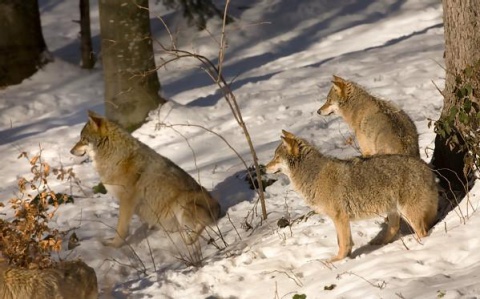Hunters,
trained conservation volunteers, foresters, national park staff,
environmentalists, researchers and students carried out field work
gathering biological samples in view of testing a non-invasive wolf
census methodology.

“One
of the many controversies surrounding large carnivores relates to
knowledge over their status (distribution, numbers and population
trends). A major part of this conflict concerns whose knowledge is
‘right’ when different stakeholder groups proffer disparate information.”
The
aim of the project, conducted from 2013 to 2014, was to address
conflicts between stakeholders arising from differing perceptions of
wolf abundance.
This one-year project was one of the pilot actions on large carnivores at the population level developed under the project Support to the European Commission’s policy on large carnivores under the Habitats Directive – phase 2 (contract no. 07.0307/2013/654446/SER/B.3). It
was therefore financed by the European Commission and implemented by
the Istituto di Ecologia Applicata (Rome) with support from the Large
Carnivore Initiative for Europe (IUCN/SSC LCIE).
Considering
that Slovakia is a range state with ongoing controversy on wolf hunting
management, it appeared relevant to focus the action in this country
while also conducting field work on transboundary areas in order to
improve collaboration with other countries.
Wolf
numbers are often hard to census, with controversy arising from
uncertainty in the interpretation of numbers of wolves from tracks and
signs as well as the added complication of the same wolves being counted
more than once as they move between hunting units.” It
was therefore relevant to develop methods for improving populations
monitoring while involving local stakeholders in the process so that
voluntary workers are mobilised and conflicts on the validity of the
various knowledge forms are reduced.
From
December 2013 to June 2014, the fieldwork was conducted with 60 people
including trained conservation volunteers, hunters, foresters, national
park staff, environmentalists, researchers and students.
The
action was the result of cooperation between the Slovak Wildlife
Society, the Slovak Hunting Association, Forests of the Slovak Republic
state enterprise and organizations of the State Nature Conservancy of
the Slovak Republic as well as the University of Ljubljana’s Animal
Ecology Research Group.
Non-invasive samples (urine, scats and hair) were collected in order to genotype them and identify the individuals. Various results were then highlighted:
- 20 different wolves were identified
- It appeared that those individuals were members of 5 up to 9 packs
- The population showed a high genetic diversity
- There was no evidence of hybridization between wolves and dogs
- The data gathered indicate the presence of 20 - 45 wolves in the area
- Greater sampling effort to enable the use of capture-recapture analysis would allow for a more precise estimate
The
advantage of this pilot was to successfully test procedures and
identify problems while obtaining sufficient results to demonstrate the
potential utility of the method, that could be then developed at
regional, national and transboundary levels.
The other positive consequence was to obtain population census that is not contested by the various stakeholders.
“The
demonstration of a state-of-the-art approach to improving knowledge of
large carnivore population status should help to foster a critical
appraisal of traditional methods and will hopefully open the way for
improved methods and collaborative data generation in the future.”
For more information:
info@slovakwildlife.org
Report:
Engaging stakeholders in wildlife monitoring
A PILOT STUDY OF WOLVES IN SLOVAKIA USING NON-INVASIVE GENETIC SAMPLING
Robin Rigg, Tomaž Skrbinšek & John Linnell
Final report, December 2014
http://ec.europa.eu/environment/nature/conservation/species/carnivores/pdf/pa_slovakia_finalreport.pdfsource


No comments:
Post a Comment